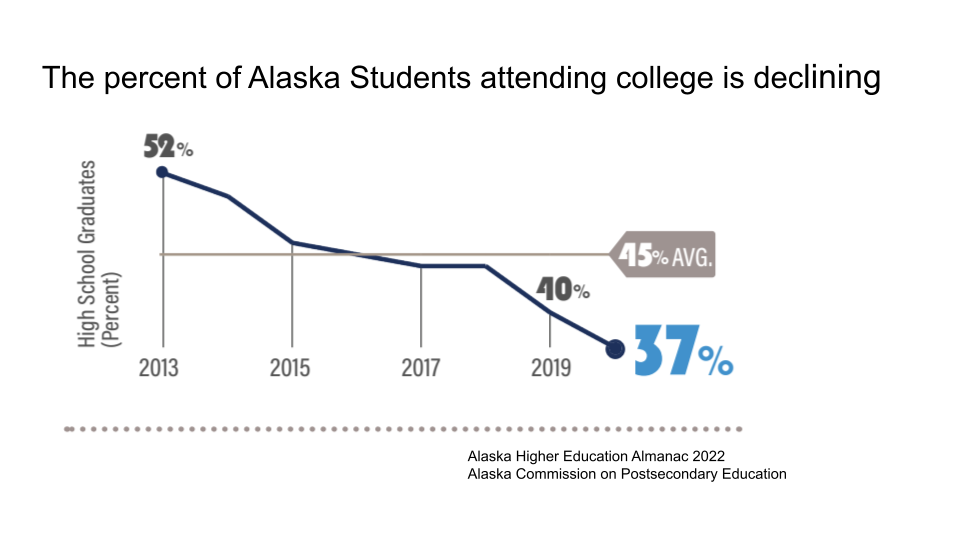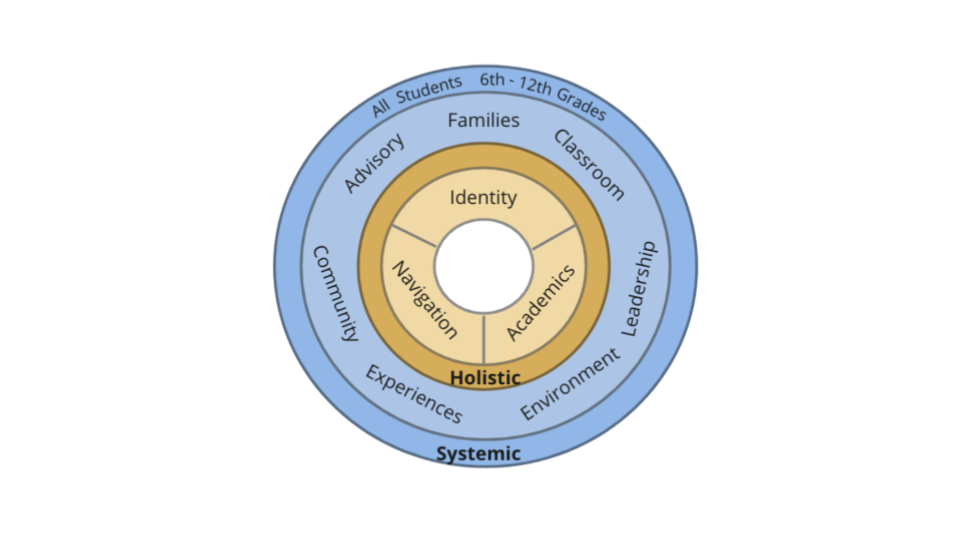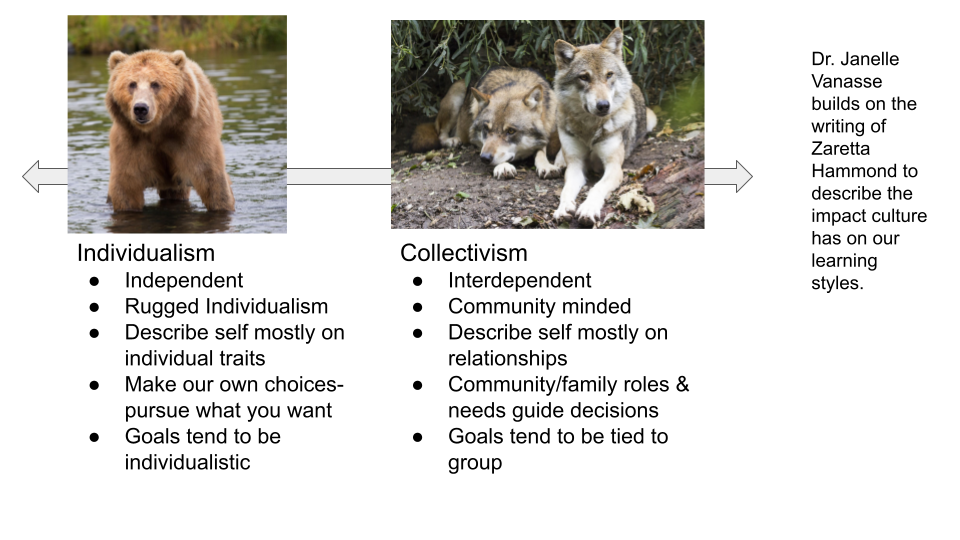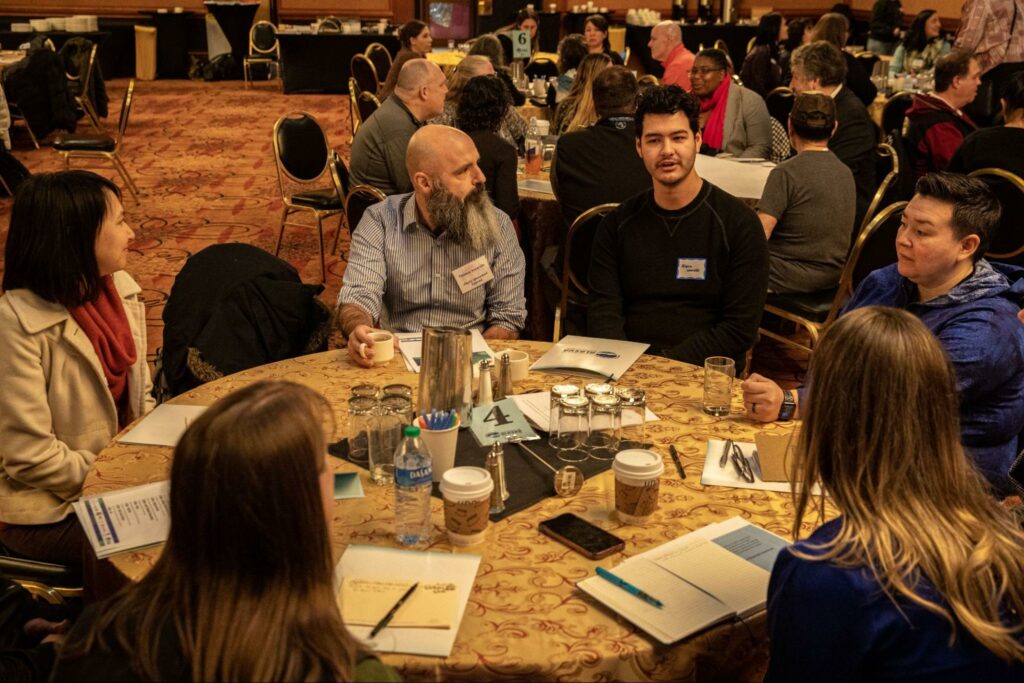Preparing Students for their Postsecondary Future

Emily Ferry, AASB Collective Impact Coordinator
As a junior in high school in rural King Cove, AK, Dannielle Carlson was top of her class. However, she didn’t plan to attend college until her teachers helped her to apply. Despite this support, Dannielle felt unprepared.
“My K-12 education did not prepare me with the skills I needed to survive, let alone thrive academically. Thankfully, I had the skills to teach myself things and the determination to make a life for myself. When I thought about dropping out, the only reason I stayed was because I simply did not have anywhere else to go,” she says in her Masters paper Lessening Barriers for Alaska Native Students.
While Dannielle credits her resilience and grit as strengths, she cautions against requiring students to possess those skills in order to get a degree. She writes that “expecting Indigenous students to be resilient in order to succeed is unrealistic, unfair, and a perspective to be reevaluated.”
Unfortunately, the struggles that Dannielle experienced are not unique. According to the 2022 Higher Education Almanac, Alaska has the lowest rate of students graduating from college and the lowest – and declining – rate of high school students headed to college. And even though there is a fair amount of funding available for Alaskan students, the state has the lowest rate of postsecondary participation by low-income students. Alaska Native students are also significantly underrepresented in the state’s higher education system.

The Alaska postsecondary Completion and Access Network (Alaska CAN) predicts that by 2025, 65% of jobs in the state will require a certificate or postsecondary degree. Currently, only 55% of Alaskan adults have the qualifications needed to fill Alaska’s workforce demands.
Finding Solutions
Over the past year, the AASB and the Southeast Network of Alaska CAN has been exploring what schools and communities can do to help students prepare for life after high school. The group put together the Postsecondary Bridging Inventory, which can help schools identify where and how to provide support for students. Categories include Advisory, Classroom, Family, Environment, Experiences, Community, and Leadership.

Participants at AASB’s 2022 annual conference and post-conference Now for Next workshop further explored ways that schools and communities can help students transition.
Keynote speaker Dr. Janelle Vanaase framed the discussion by encouraging school boards to examine three components of readiness: Academic Preparation, Navigation Skills, and Cultural Identity.
Academic Preparation
Schools are all about academic preparation, but there are a few key strategies that can make a big difference including focusing on the right data, retaining staff, and linking learning to a broader purpose:
Dr. Vanasse encouraged school leadership to keep an eye on academic growth data with the new MAPS assessment now being used by the state. Schools boards can also review reports from the National Student Clearinghouse to see how their high school graduates are doing.
During a panel session, Dannielle Carlson cited high teacher turnover as a key reason she and the students she interviewed felt unprepared; she called on districts to focus on retaining staff and growing their own teachers.
Delta/Greely School District Shaun Streyle shared how his team has increased student engagement by linking learning to a broader purpose through its Enroll, Enlist, Employ Initiative. Starting in 9th grade students are asked to pick a career focus (for now). Students in each classroom are encouraged to tackle assignments through the lens of their chosen career field. For example, during a Civil War Social Studies unit students interested in a Healthy & Science pathway might research the medical technology and survival rates while those interested in Art & Communications might analyze how photography was used during the war. Since the initiative started, enrollment and attendance have increased.
Cultural Identity
A growing body of research finds that students who know who they are fair better in life after high school. One study even found that Indigenous students who viewed their cultural identity as a strength had higher GPAs. Tapping into what motivates students, such as providing for their family or caring for their community, can be far more motivating than the promise of a paycheck.

Bristol Bay Region Career and Technical Education (BBRCTE) accomplishes these goals by helping students discover how the values and skills they have grown up with can be assets to their careers. Instructor Justin Zimin says they look for “hidden skills in plain sight” like the ability to patiently hunt a bird to get the perfect shot – for a photography magazine. Or how the village value of zero-waste is an asset in a commercial kitchen.
BBRCTE was formed when four school districts – the Lake & Penn, Bristol Bay, Dillingham, and Southwest – leveraged their resources to create a more robust CTE program. During the four week-long intensives, students experience different career pathways and build their confidence. The consortium also leverages community partnerships by contracting local instructors, linking students to local jobs or the next step toward career training, and attracting funding, and support from local employers like the Bristol Bay Native Corporation.
Navigation
In her former role as a high school principal, Dr. Vanasse observed that students, especially those who may be the first in their families to go to college, often need explicit instruction and support to navigate what can be a complicated and overwhelming process. She also notes that in many Alaska Native cultures it is not common practice to ask for help. Paradoxically, many of the current support structures like drop in-career centers require students and families to ask for help.
When the Alaska College and Career Advisors program embedded advisors in a handful of schools across the state, proactive support for creating a postsecondary plan was provided to all students. The advisors themselves were well-supported with on-going training that helped them hone in on key steps to ensure they were reaching all students, without requiring them to seek support.

Prior to implementing the program, about 30% of students in Bethel Regional High School enrolled in college within a year of graduating from high school. In 2016, after the program had been in place for several years, the enrollment rate went up to 65%. And FAFSA, the Free Application for Federal Student Aid, completion rates went up to 85%. Six years later, Bethel’s high school class of 2016 also had double the college graduation rate of earlier classes. When the program was defunded due to state budget cuts, college enrollment rates fell back to pre-program levels.
Did you know that Alaska has the lowest FAFSA completion rate in the nation, which means that students miss out on up to $15 million in student aid? Find out how you can help students complete the FAFSA.
What’s Next

AASB concluded its annual conference by co-hosting the Now for Next workshop with Alaska CAN. Over one hundred people from across the state came together to examine what we could do now to help students prepare for what’s next.
Key themes that emerged from the day-long discussion included:
- Finding, analyzing and scaling up what is working in Alaska
- Re-investing in career guides
- Understanding & providing support for families to help guide their students
- Elevating cultural values and traditional ways of knowing
- Connecting students with their broader purpose
- Offering bridging opportunities for students to try out postsecondary skills while in high school
- Teaching culturally affirming social, emotional, and professional skills
- Valuing all pathways – there are many routes and ways to make meaningful contributions.
There is still much work to be done, but the conversations are a start toward moving from pockets of excellence toward a collective impact that can improve outcomes for our students – and our state.
How are your graduates doing?
These data sources can help shed some light on postsecondary outcomes in your district:
- Are your students showing growth? The MAPS assessment can help you focus on this metric.
- Are you offering equitable opportunities? Is the percentage of students in AP and dual enrollment courses proportionate across race and socio-economic classes?
- Are students and families talking about education after high school and career options? The School Climate and Connectedness Survey poses these questions to middle and high school students and families.
- Are your students accessing financial resources? The FAFSA Tracker shows real-time completion rates for each district and high school.
- Who is accessing financial resources? The Alaska Performance Scholarship annual report lists how many students from your school district are eligible for using this merit-based scholarship.
- How are your graduates fairing? The Alaska Commission on Postsecondary Education can share reports for free from the National Student Clearinghouse which tracks graduates for six years after high school. Email eed.acpe-execdirector@alaska.gov to find out more.
AASB’s Conditions for Learning Team can help your district step up its postsecondary game plan by:Gathering and analyzing dataFacilitating a postsecondary inventory and planning sessionsOffering effective strategies for engaging families and students in planning for life after high school Contact Emily Ferry, eferry@aasb.org, 907 463-1660 to learn more.
